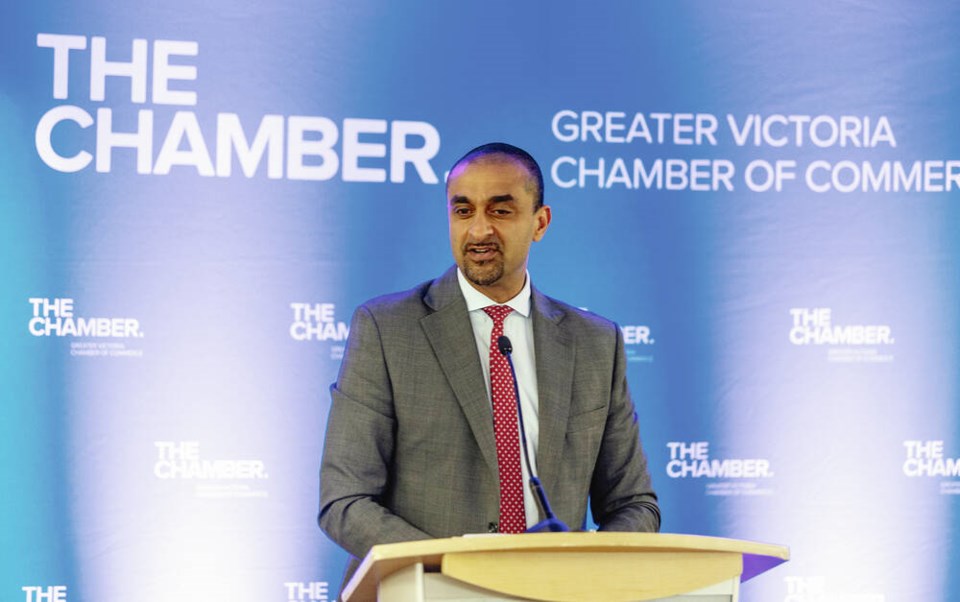Housing Minister Ravi Kahlon gave NIMBYs a taste of what’s to come on Tuesday.
He made a move that applies only to one block of a Kitsilano neighbourhood in Vancouver. But the message can be taken as applying anywhere in B.C. — the “not in my backyard” objections to new housing in the NDP government’s latest push won’t carry nearly the weight they once did.
The bill relates to a badly needed housing project that has gone through the protracted development-approval mill and finally cleared all the hurdles. But now it is hung up on a court challenge from unhappy neighbours who want a judicial review of the process.
The bill, which the City of Â鶹´«Ă˝Ół»requested, simply asserts that the rezoning of the property is valid. The phrase that jumps out is: “…despite any decision of a court to the contrary made before or after this section comes into force.”
In other words: Don’t waste your time appealing to the courts — the government has decided this project will proceed.
Kahlon told reporters later it has taken two years to get the supportive housing project approved. “We’re in a housing crisis — we simply can’t wait longer and longer to get the critical housing that we need.
“When we get a decision from local government that says go for it, we need to get shovels in the ground.”
There’s a similar clause in the Housing Supply Act from last fall, which will set housing targets in select communities. B.C. will provide incentives to councils to meet the targets, but provincial authorities can override them if they fall short.
One section grants immunity to provincial advisers from legal proceedings for damages. That would head off court actions from aggrieved neighbours.
Two hours after introducing the bill, Kahlon appeared at a Greater Victoria Chamber of Commerce housing discussion and doubled down on the full-steam-ahead stance.
The Arbutus project in Â鶹´«Ă˝Ół»has been the subject of 300 meetings and a six-day public hearing, he said, but “now there’s a court challenge. We’re never going to be able to build our way out of a housing crisis if we continue to re-litigate decisions that have already been made.”
The NIMBY override has echoes of a joint federal-provincial study of the housing crisis from two years ago. Co-chaired by former NDP cabinet minister Joy MacPhail, it expressed doubt about the value of public hearings and recommended reducing reliance on them.
The hearings amplify objections at the expense of city-wide social goals and reduce affordability, said the report. Over-reliance on them favours certain voices over others, since neighbours’ opposition often outweighs the people who stand to benefit from new housing, but don’t show up for such hearings.
“Anti-development interests apply disproportionate political pressure on decision-makers,” said the report.
Elsewhere during the chamber appearance, Kahlon defended the key move in the refreshed housing strategy of allowing up to four homes on single-family-zoned lots. That will be legislated this fall.
Although the City of Victoria has already moved in that direction, Premier David Eby said the entire region needs to follow suit to give young families better options.
“I’m not saying single family homes are gone … they will be here as long as people can afford them. What we are saying is when a house comes down, it shouldn’t be an expensive, single-family home [replacing it]. There should be options for people.”
Also coming in the fall is the drive in eight to 10 selected communities to accelerate home-building by imposing targets. The locales will be announced in coming months and selected by way of two lenses.
One group will be communities that have traditionally taken on growth and the other will be “communities that have hidden from growth,” said Kahlon. “They have a responsibility to be part of the solution.”
Kahlon also said the days of selling public lands to private developers are gone. “We have to use public lands now to be able to build truly affordable housing.”
He said all federal, provincial and school board properties are being assessed for social-housing potential and more details will come in the fall.
The one constant through all housing initiatives in the works is change.
Said Kahlon: “Whether you want the community to change or not, it is changing.”
>>> To comment on this article, write a letter to the editor: [email protected]




